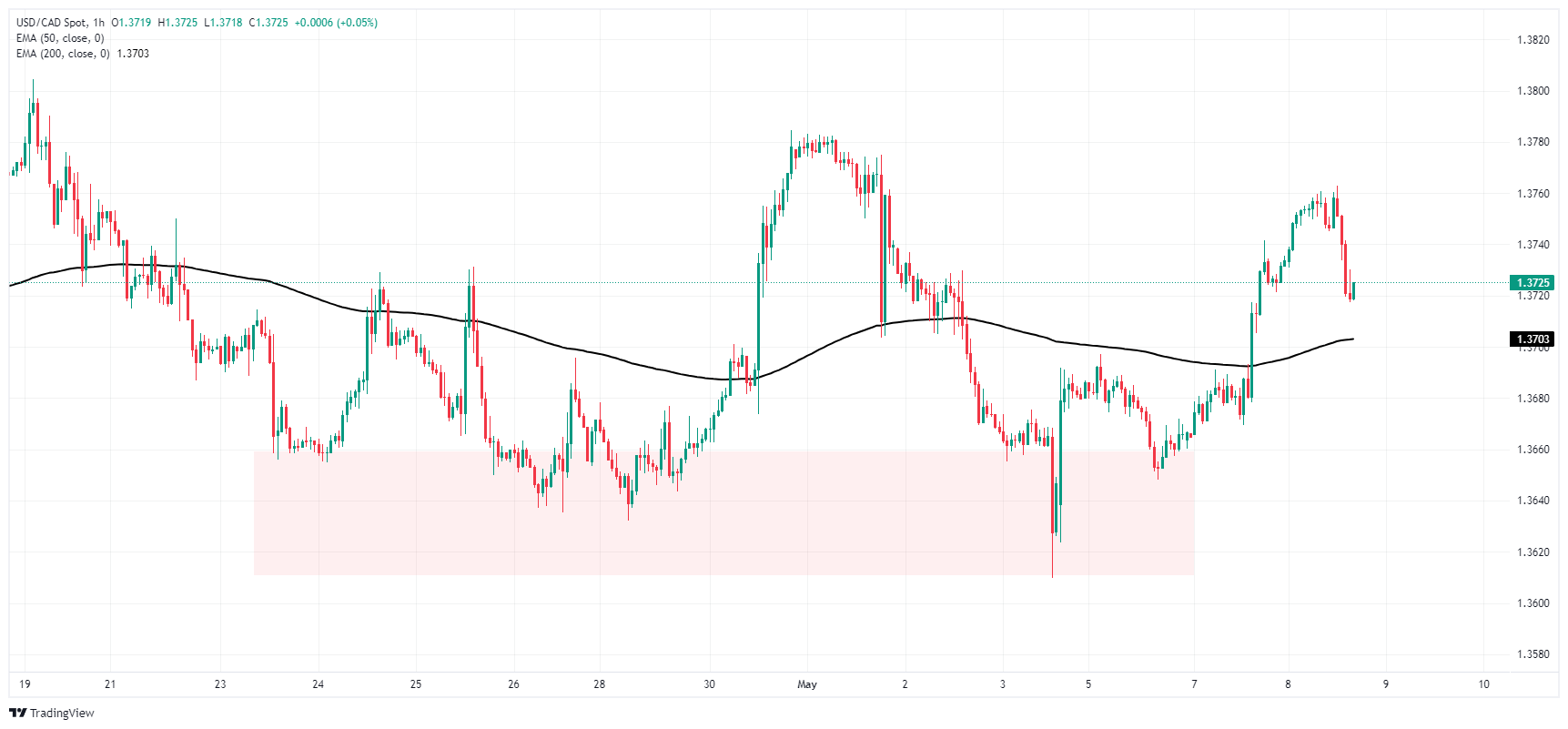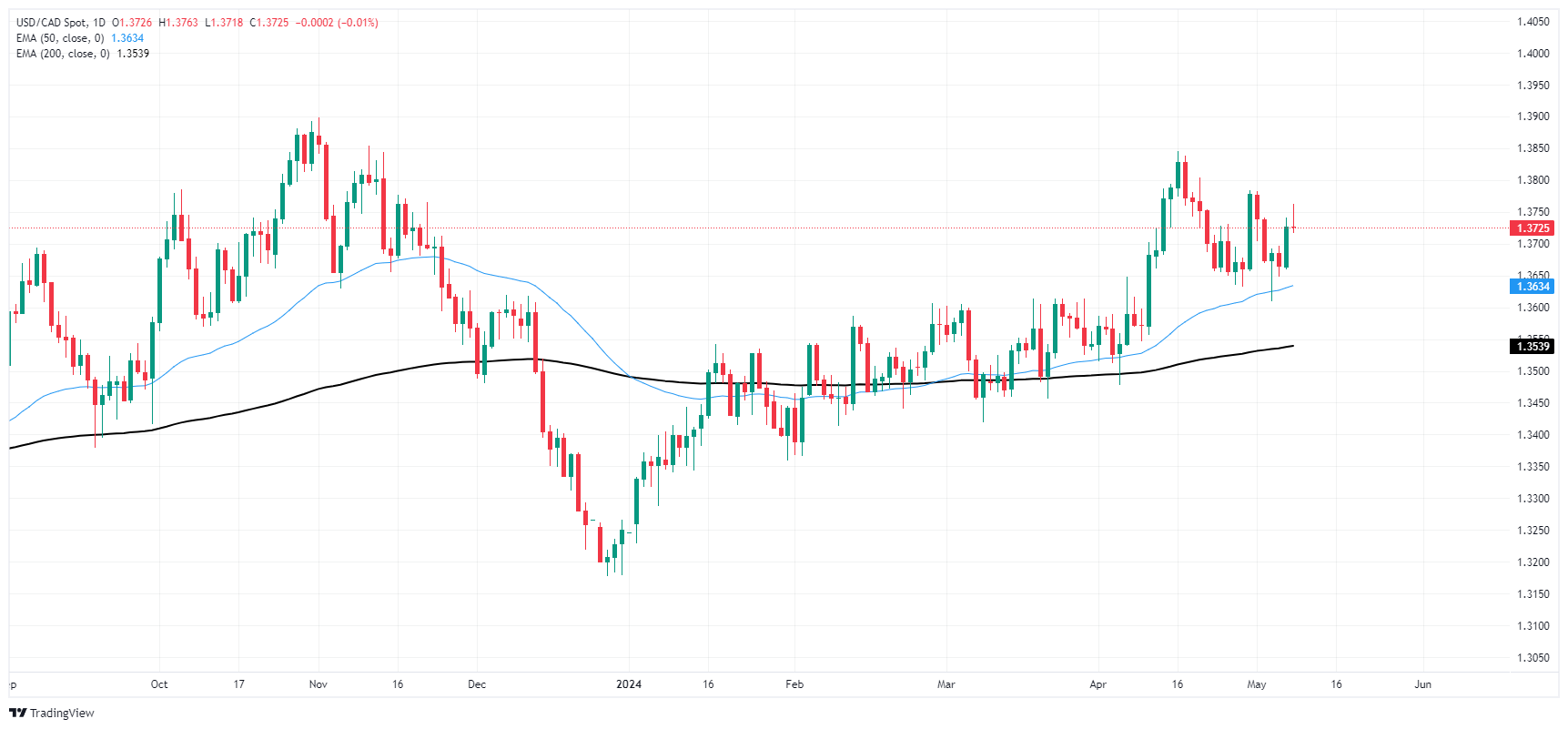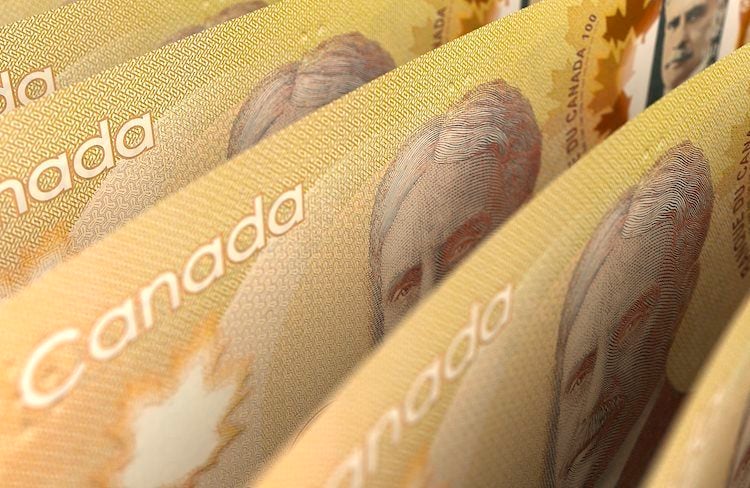- Canadian Dollar rebounds after previous day’s downside.
- Canada is absent from the economic calendar on Wednesday.
- BoC’s Macklem due Thursday to deliver latest Financial System Review.
The Canadian Dollar (CAD) rebounded across broader markets on Wednesday, regaining ground lost in the previous sessions. Markets remain thin as traders await meaningful data and watch for talking points from Federal Reserve (Fed) officials.
Canada is entirely absent from Wednesday’s data docket, leaving CAD at the mercy of broader market flows. Bank of Canada (BoC) Governor Tiff Macklem will make an appearance on Thursday while delivering the BoC’s Financial System Review in Ottawa.
Daily digest market movers: Quiet markets give CAD room to recover lost ground
- Canadian Dollar squeezes out scant gains across the board on quiet Wednesday.
- Fedspeak remains a key risk to market sentiment as Fed officials try to soothe the idea of higher rates for longer over market sentiment.
- [Fed Collins: The job market is coming to a better balance] (https://www.fxstreet.com/news/fed-collins-the-job-market-is-coming-to-a-better-balance-202405081555)
- Thursday’s BoC Financial System Review headed by BoC Gov Macklem will allow CAD traders to look closer at what the BoC is watching in the Canadian economy.
- Friday will close out the trading week with Canadian labor figures. The Canadian Unemployment Rate is expected to tick up to 6.2% in April from 6.1%, while Net Change in Employment is expected to show 18.8K net jobs added over the month of April compared to the previous -2.2K decline.
Technical analysis: Canadian Dollar claws back lost ground, but momentum remains tepid
The Canadian Dollar (CAD) is broadly firmer on Wednesday, gaining half a percent against the Japanese Yen (JPY) and has stepped a fifth of a percent higher against the Australian Dollar (AUD). Elsewhere, gains remain thin with the CAD stepping up around a tenth of a percent against the Pound Sterling (GBP) and the US Dollar (USD).
The Canadian Dollar’s rebound on Wednesday drags the USD/CAD down, pricing in a near-term fumble of the 1.3760 level. The pair is returning to the 200-hour Exponential Moving Average (EMA) near 1.3700, building out a rough congestion pattern.
Daily candles still hold bullish territory above the 200-day EMA at 1.3541, but repeated failures to retake the last swing high near 1.3850 leave the USD/CAD exposed to a pullback into familiar levels.
USD/CAD hourly chart
USD/CAD daily chart
Canadian Dollar FAQs
The key factors driving the Canadian Dollar (CAD) are the level of interest rates set by the Bank of Canada (BoC), the price of Oil, Canada’s largest export, the health of its economy, inflation and the Trade Balance, which is the difference between the value of Canada’s exports versus its imports. Other factors include market sentiment – whether investors are taking on more risky assets (risk-on) or seeking safe-havens (risk-off) – with risk-on being CAD-positive. As its largest trading partner, the health of the US economy is also a key factor influencing the Canadian Dollar.
The Bank of Canada (BoC) has a significant influence on the Canadian Dollar by setting the level of interest rates that banks can lend to one another. This influences the level of interest rates for everyone. The main goal of the BoC is to maintain inflation at 1-3% by adjusting interest rates up or down. Relatively higher interest rates tend to be positive for the CAD. The Bank of Canada can also use quantitative easing and tightening to influence credit conditions, with the former CAD-negative and the latter CAD-positive.
The price of Oil is a key factor impacting the value of the Canadian Dollar. Petroleum is Canada’s biggest export, so Oil price tends to have an immediate impact on the CAD value. Generally, if Oil price rises CAD also goes up, as aggregate demand for the currency increases. The opposite is the case if the price of Oil falls. Higher Oil prices also tend to result in a greater likelihood of a positive Trade Balance, which is also supportive of the CAD.
While inflation had always traditionally been thought of as a negative factor for a currency since it lowers the value of money, the opposite has actually been the case in modern times with the relaxation of cross-border capital controls. Higher inflation tends to lead central banks to put up interest rates which attracts more capital inflows from global investors seeking a lucrative place to keep their money. This increases demand for the local currency, which in Canada’s case is the Canadian Dollar.
Macroeconomic data releases gauge the health of the economy and can have an impact on the Canadian Dollar. Indicators such as GDP, Manufacturing and Services PMIs, employment, and consumer sentiment surveys can all influence the direction of the CAD. A strong economy is good for the Canadian Dollar. Not only does it attract more foreign investment but it may encourage the Bank of Canada to put up interest rates, leading to a stronger currency. If economic data is weak, however, the CAD is likely to fall.
